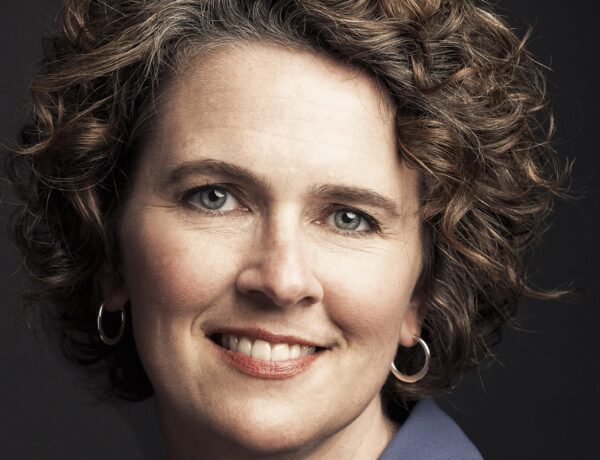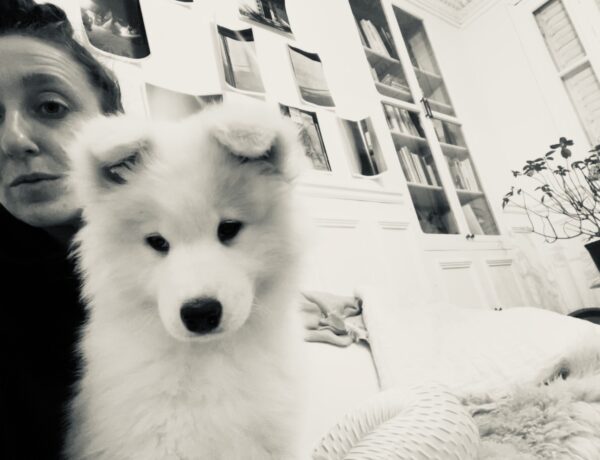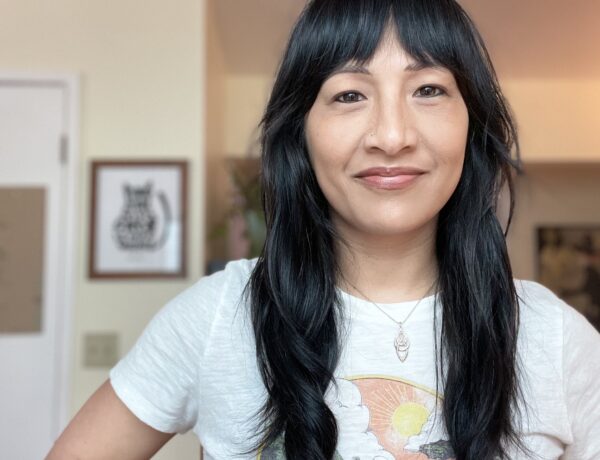Sloane Crosley is the author of The New York Times bestselling essay collections, I Was Told There’d Be Cake (a 2009 finalist for The Thurber Prize for American Humor) and How Did You Get This Number, as well as Look Alive Out There (a 2019 finalist for The Thurber Prize for American Humor) and the bestselling novels, The Clasp and Cult Classic.
She served as editor of The Best American Travel Writing series and is featured in The Library of America’s 50 Funniest American Writers, The Best American Nonrequired Reading, Phillip Lopate’s The Contemporary American Essay and others.
She was the inaugural columnist for The New York Times Op-Ed “Townies” series, a contributing editor at Interview Magazine, and a columnist for The Village Voice, Vanity Fair, The Independent, Black Book, Departures and The New York Observer. She is a contributing editor at Vanity Fair. The paperback version of Cult Classic is out now.
Hi Sloane! We’re delighted to have you as a guest on Famous Writing Routines. For our readers who may not be familiar with your work, could you please give us a brief introduction to yourself?
Sure. I’ve published three books of essays; two novels and my first full-length book of nonfiction, Grief Is for People, is out early next year. I also do the occasional profile, reported piece, book review, etc. This all makes me sound more versatile than I am. I would not ask me to write a poem if I were you.
Can you speak to your experience as a columnist for various publications such as The New York Times, The Village Voice, Vanity Fair, and The Independent and how it informs your writing?
Those are very different venues, time periods and columns. But I’m glad you asked about them because no one ever does. Vanity Fair was a books column that no longer exists. The others are also extinct (they appeared in publications that are now gone or sections of those publications that are now gone).
My work was in the personal essay or op-ed format. I’d say I was most informed by The Independent because my column was such an unmitigated disaster. The assignment was a weekly musing on “anything at all.” Tracey Emin had written a very successful voice-heavy column for them and so those were, indirectly, the shoes I was filling. A famous British artist. It wasn’t a baton-pass exactly, but I knew what was possible. Alas, I found Write Whatever to be a death sentence.
I did it for thirty-one weeks. I’m quite proud of passing an endurance test but I refuse to read a single one to this day. I have a vague memory of trying to pass off “it doesn’t rain as much as you’d think it does in Seattle” as an opinion. My tone was also too chummy. I learned so many lessons from that.
First, know your audience. Second, learn how to get to the point. Also, learn how to produce regularly even if you never have to do it again. Naturally, one would like everything to be high art but that desire can leave you with no art. Mostly, it was like holding a mirror up to my own voice. A writer is her own secret weapon and her own Achilles heel. Nothing will help you see that more clearly than a weekly column.
What was the inspiration behind the story and themes in your book Cult Classic?
The themes had been swirling around my head for ages. It’s a story about connection and romance but, hopefully, not in the usual way. Is love a choice? Is it off-putting to simply question it, especially for a woman, to portray someone struggling not to find love but to identify it? Someone at once consumed and baffled by it? How do we keep our past with us without letting it smother us? Most people have grappled with one or more of these questions.
Cult Classic is also a book about aging and about how we grow closer to some friends and drift apart from others. Mostly, it’s a comedy. A dark comedy. But, crazy as this may sound considering it features a cult operating out of a derelict synagogue, the story came about pretty naturally.
How did you approach weaving elements of suspense and fantasy into a contemporary narrative?
Well, “fantasy” is more contemporary than ever these days and “suspense” is key for any piece of writing. So I don’t see these elements in opposition to a novel set now. I don’t mean to sound so “oh, this old thing?” when asked about the various elements of the book. I know they’re there. I’m aware it’s both a comedy of manners and speculative fiction, but it’s not for me to say if the weaving was a success. It’s not up to me anymore.
What I will say: writing fiction is a bit like acting. So long as you don’t break character, so long as you have the foundation of the world you’ve created, you can do just about anything you like. Because you know for yourself that you didn’t toss in elements or characters or even words because you got bored. Or because you wanted to be thought of in a certain way as a writer. You did what you thought was right for the story and, by extension, the reader.
Can you discuss the role of New York City and its neighborhoods in the book?
Cult Classic is a deeply New York book, so deep that I didn’t see it as “the setting.” I can’t see the bodega though the brownstones, if you will. (Or some less cringey analogy.) Much of my first novel, The Clasp, is set in Miami, Los Angeles and Normandy. I had a real sense of “checking in” with those places at all times, of absorbing them either in person or remotely.
New York is my home so, if anything, I started second guessing what I already knew. I have never lived on the Lower East Side, where much of the book takes place. Was I worried, while working on The Clasp, that I would fail to capture the texture of French apple trees? Not nearly as worried as I was, while working on Cult Classic, that I would fail to capture a street twenty blocks away.
Can you describe your daily writing routine? What does a typical writing day look like for you?
I try to have three days that look alike. Ideally more. But three is good. I know I produce better work when things are regular and silent. Three days of working through the morning, of seeing no one, of not traveling, of not leaving the house except to take a walk. Maybe I grab a coffee or drink with a friend if it’s the right friend.
My approach is pretty typical, I think. This is why no writer’s colony will let you go for less than two weeks. Actually, I’m sure that has everything to do with logistics. But it also strikes me as an acknowledgment that it takes a few days of total nonsense before the real work begins.
Do you have any specific rituals or habits that you follow before beginning to write?
I try not to go online too close to when I begin writing. Writing in the morning is the easiest way to accomplish this. Assuming I haven’t been out too late the night before. If I’m feeling very disciplined, it’s a straight shot from whatever I read or wrote the night before, to unconsciousness, back to that document. I go back and read a few pages before continuing on. Sometimes the whole thing. As a book gets closer to being done, I get up psychotically early so I can read the whole thing from the beginning, in one sitting, and then keep going.
One specific habit, or sign: I know things are going well when breakfast is a solution to a problem, not a tool for procrastination. If you would like fresh juice and omelets and whipped things, come to my house when the writing is going badly. I’ll hook you up.
How does your background as a journalist and editor influence your approach to writing and creative process?
I have edited three anthologies and the journalism has always been there but not at the forefront. I published my first personal pieces in 2004, one in The Village Voice and one in Playboy, and then my first book came out in 2008. So, timing-wise, everything has felt part of the same buffet. The books are the pig with the apple in its mouth.
The journalism is, say, the creamed spinach. And for a long time, the table itself was book publishing. I was doing all my writing while working in book publicity, mostly for Vintage books, which is the paperback arm of Knopf.
I worked as an agent’s assistant for a year after college and then in book publicity for a little over ten years. I published my first two books of essays while at that job. So 2022 was a personal milestone: I have officially spent more of my career as a full-time writer than I have on the other side of the industry.
What does your current writing workspace look like?
I tend to migrate across my apartment during the day, like the world’s slowest pinball, from the bedroom to the kitchen and back. I work at a little white table, facing a little white wall. There’s nothing on the table except a giant yellow lamp and a couple of thesauruses. I put my laptop on them so it’s closer to eye-level. One option would be to use the whole, actual desk in the living room. But it’s covered in magazines and mail and lip balms and trash and oh well.
Affiliate disclaimer: Some links on this website are affiliate links. We may earn a small commission if you make a purchase through these links, but only promote products we truly believe in. We disclose affiliate links and give honest reviews.



No Comments